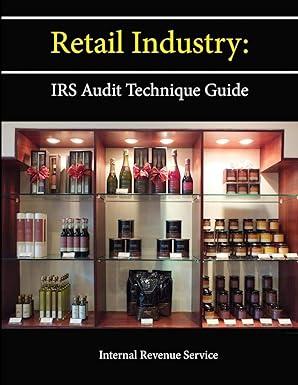Question
Nathan and Cody notice there is stiff competition in the food cart and food truck industries and therefore are considering opening a traditional restaurant. Opening
Nathan and Cody notice there is stiff competition in the food cart and food truck industries and therefore are considering opening a traditional restaurant. Opening a restaurant would have many advantages and disadvantages, the company can expect fixed costs to increase by $140,000 a year to cover rent, equipment, furniture, salaries and other costs.
This alternative is exclusive of alternative 1 -so use the original financial information from page 1 (also shown below) to calculate the effects of opening a restaurant.
| Sales | $217,875.00 |
| Variable costs | 46,687.50 |
| Contribution margin | 171,187.50 |
| Fixed costs | 90,000.00 |
| Income before taxes | 81,187.50 |
| Income taxes (32% rate) | 25,980.00 |
| Net income | 55,207.50 |
Additional information:
This alternative would allow GT to increase their plate prices to $14.50 and would increase the variable cost per unit by $2.50. Assume plate sales remain at 31,125.
1. Compute the company's new contribution margin under this alternative. Compute the contribution margin both in total dollars and per unit.
2. Compute the company's contribution margin ratio under both scenarios. (Note: Do not round the CMR for accurate calculations in the following questions).
3. Compute the break-even point in sales dollars under each scenario. How many plates will need to be sold under each situation to break-even?
4. Compute the operating leverage under each scenario. What does this figure mean? Why is it important to management?
5. If the company wishes each scenario, food cart and restaurant, to generate net income (after-tax) of $170,000, what is the amount of sales that needs to be generated? How many plates will need to be sold? Prepare a contribution margin statement for this step and verify that your after-tax net income in fact equals $170,000 for both the food cart and restaurant.
6.Assume that the company expects sales to decline by 20% next year. There will be no change in plate price. Prepare forecasted financial results for next year following the format of the contribution margin income statement as shown above with columns for each of the two types (assume a 32% tax rate, and that any loss before taxes yields a 32% tax savings).
7. Assume that the company expects sales to increase by 20% next year. There will be no change in plate price. Prepare forecasted financial results for next year following the format of the contribution margin income statement as show above with columns for each of the two types (assume 32% tax rate, and that any loss before taxes yields a 32% tax savings).
8. Identify at least two advantages and disadvantages of having a brick-and-mortar restaurant versus a food truck.
9. Thinking about sales, is there any day of the week or time of day when greater sales are expected? Which type is more sensitive to this occurrence? Which type is less sensitive to this occurrence? Which type is more advantageous and why? Is there anything else the company can do to manage the decline in sales that come with certain days and times?
10. Since no advertising budget is available under this alternative, what are some creative and low-cost methods the company could employ to help advertise the change to a restaurant?
11. Compute the profit Margin and Return on Assets for each scenario assuming average total assets of $1,000,000. Industry averages are 12% and 5% respectively.
Step by Step Solution
There are 3 Steps involved in it
Step: 1

Get Instant Access to Expert-Tailored Solutions
See step-by-step solutions with expert insights and AI powered tools for academic success
Step: 2

Step: 3

Ace Your Homework with AI
Get the answers you need in no time with our AI-driven, step-by-step assistance
Get Started


